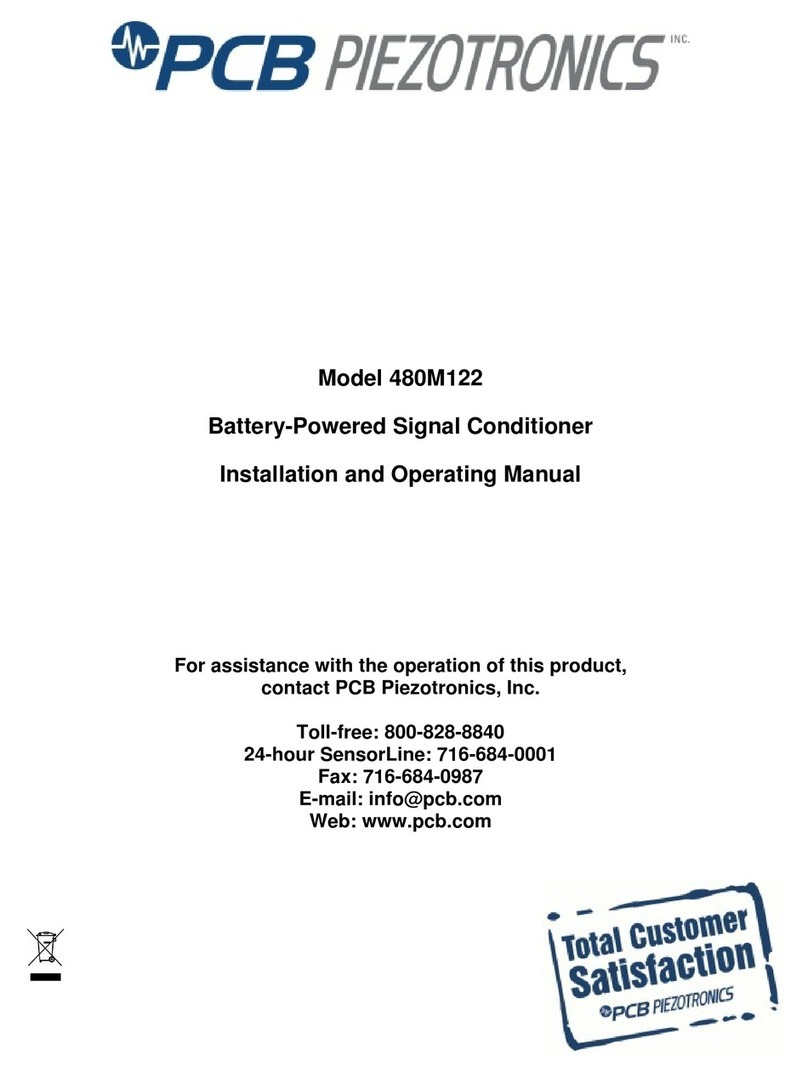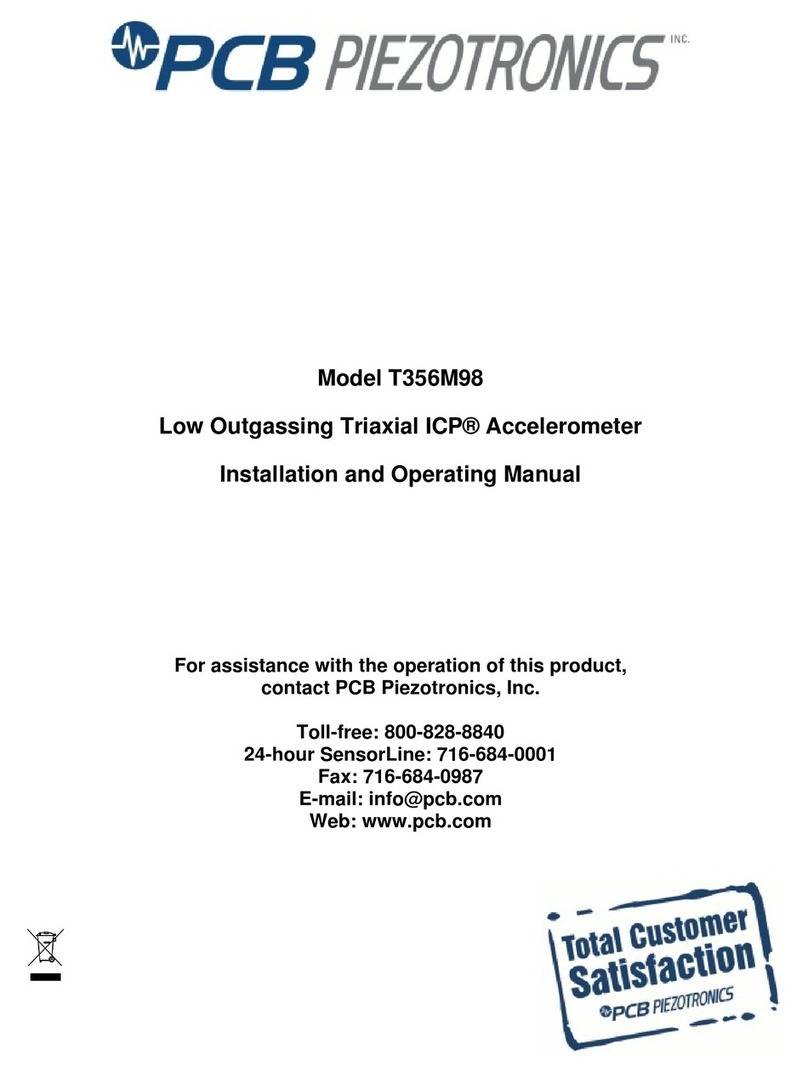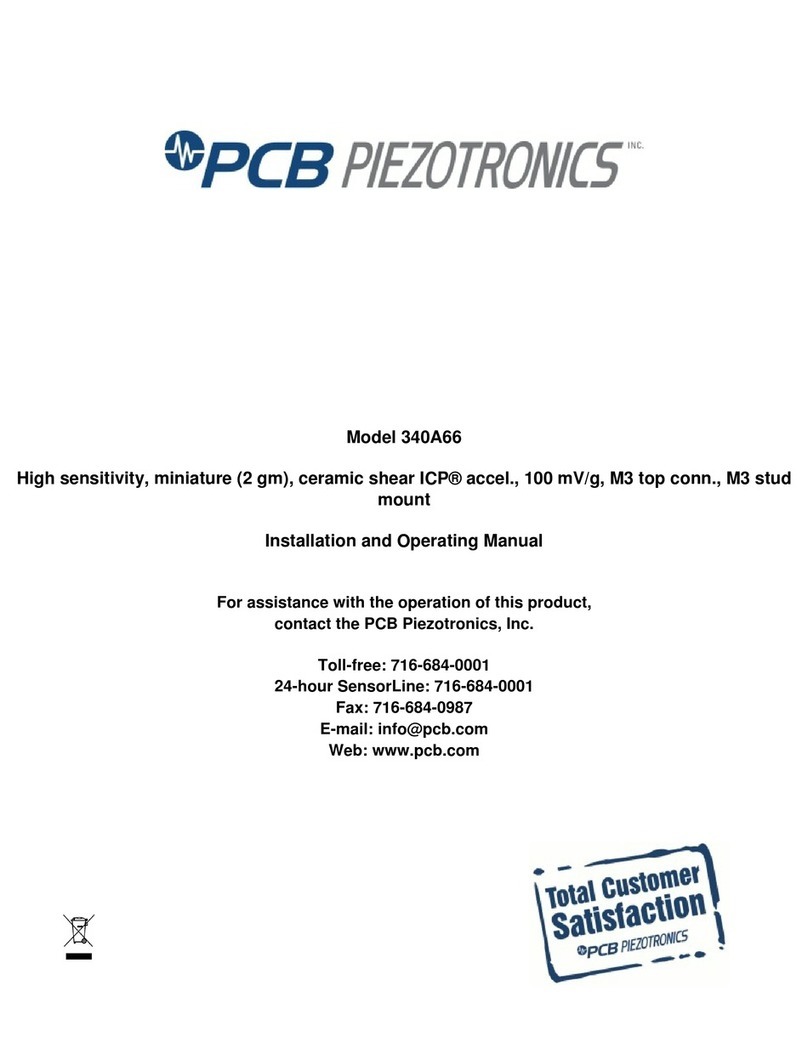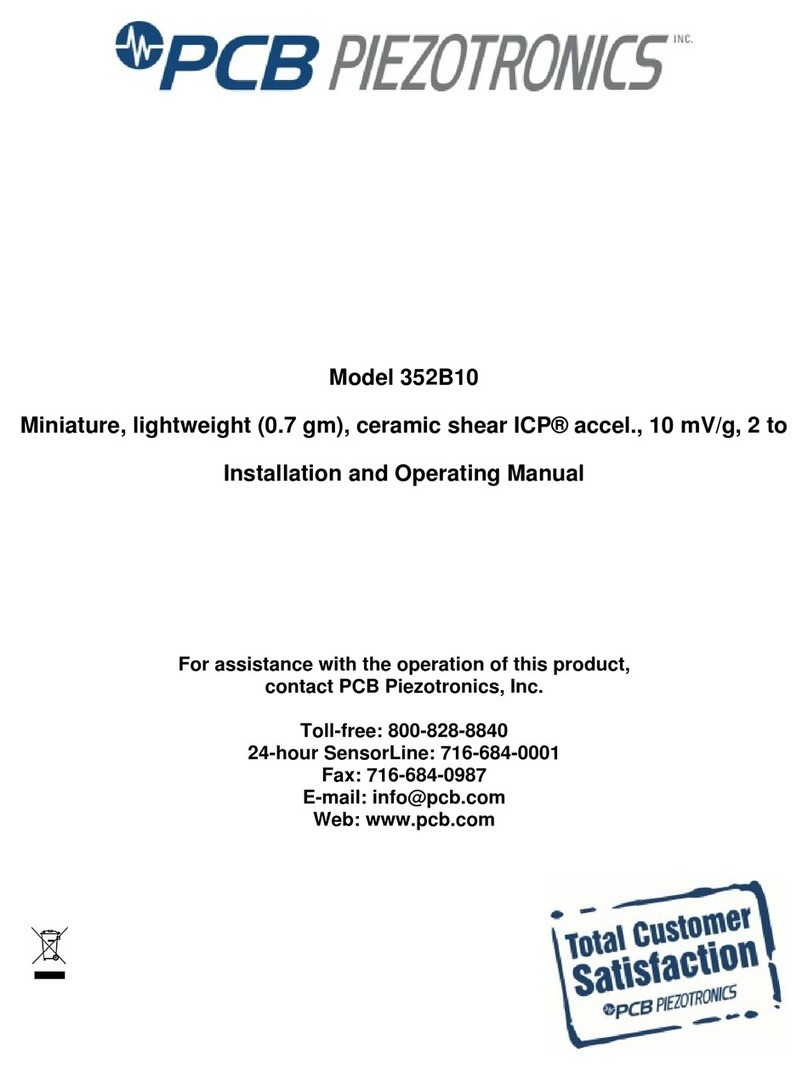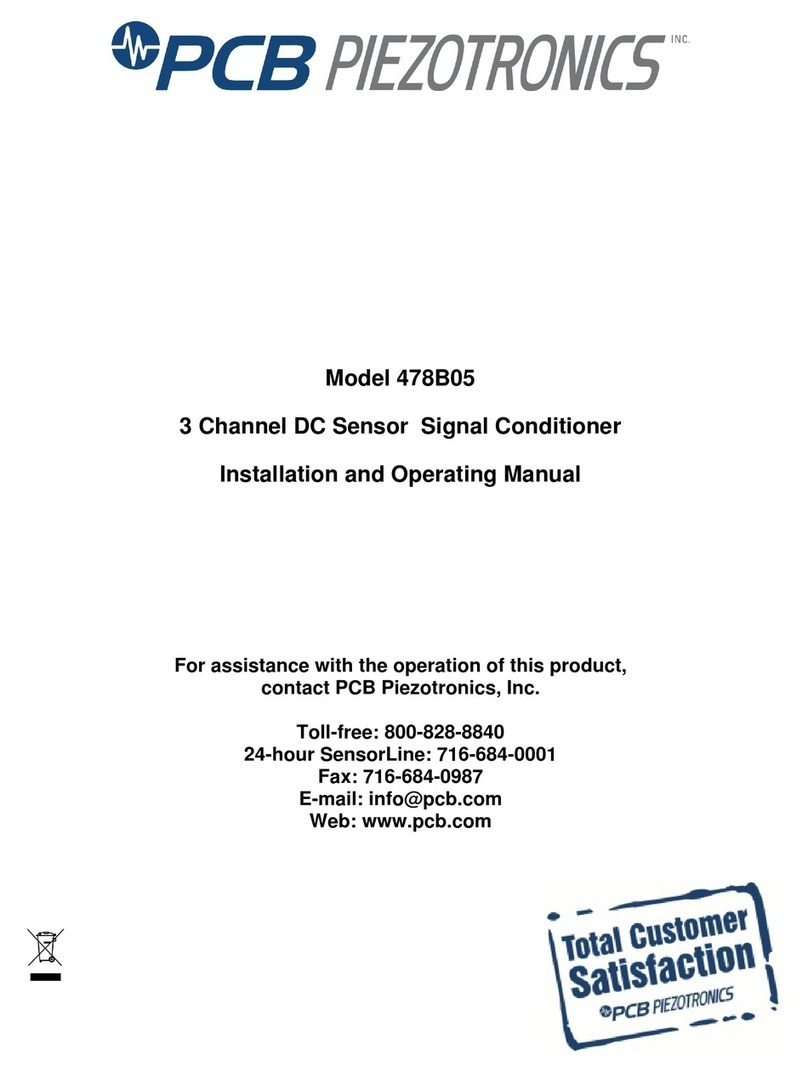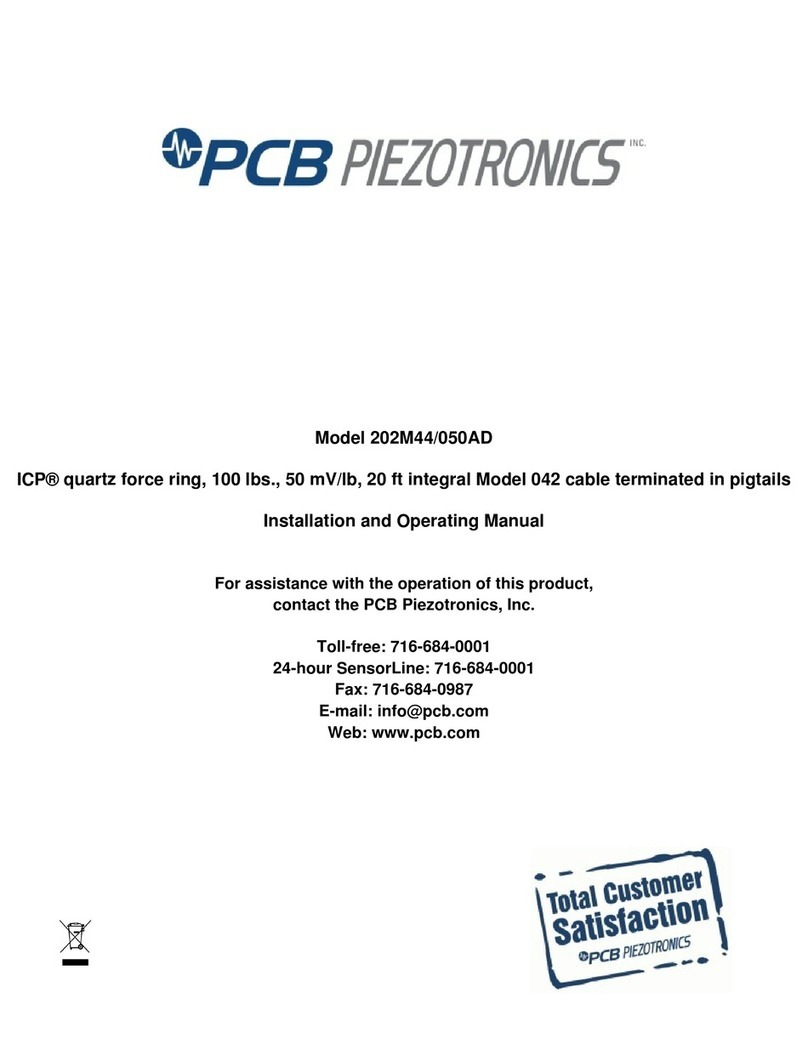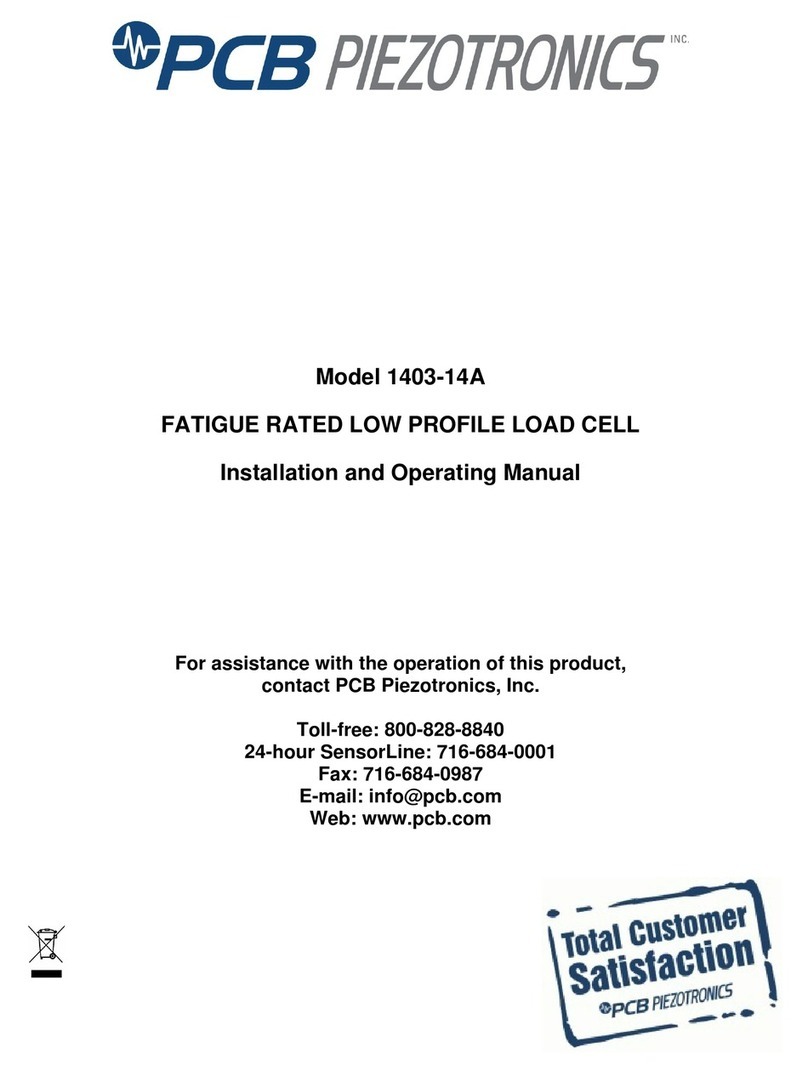
Drawing Number: 21102
Revision: B
Some models of the Series 138 feature a tygon tube
closed at one end with conical-shaped delrin plug. The
plug features a small hole for attachment of a weight.
Other models feature a one-piece molded closed tube.
2.0 INSTALLATION, CABLE
ATTACHMENT, AND SEALING
THE CABLE/CONNECTOR
ASSEMBLY
Various methods are used to mount the 138 sensors for
use in liquids. Care should be taken to prevent
conductive liquids from entering the cable or
connector assemblies, where they could cause
corrosion, short-circuiting or degradation of
insulation resistance.
For low-pressure (<500psi) dynamic measurements, a
standard low-noise coaxial cable with an extruded
teflon jacket and a 10-32 connector can be used. Heat
shrink tubing, RTV silicon rubber, or sometimes
silicone grease can make an adequate seal in an
environment with low static pressure.
For high static pressures due to deep submersion or use
in a pressure vessel, alternate methods of sealing the
cable/connector may be required. A method of
waterproofing the cable/connector assembly of a 138
which also provides protection to the cable is to put a
flexible tube (plastic, tygon, etc.) around the cable
and cable/connector assembly. Tie the tube at the
metal housing with monofilament or fine steel wire.
The opposite end of the tube must be above the level
of the liquid or sealed around the cable to prevent
liquid from entering the protective tubing. Filling the
protective tube with a non-conducting liquid such as
Dow Coming silicone oil can be done to prevent the
tube from collapsing. This will also equalize pressure
inside and outside the tubing, helping to prevent a
conductive liquid (such as water) from entering.
In some blast applications, when using a standard 10-
32 micro cable/connector, the high shock can flex the
cable/connector joint enough to move the center pin of
the 10-32 cable connector. This can cause noise on
the output signal. Protecting the connection from
shock may be required.
PCB Model 070A03 adaptor can be used to adapt the
10-32 micro jack on the 138 to a BNC jack. A heavier
coaxial cable (eg. RG-58/U) can now be used in place
of the micro cable. Because of the large mass of the
070A03 compared to the 10-32 jack, this connection
should be sealed and protected from shock and
turbulence. Putting a two to three inch diameter of duct
seal, wrapped with a waterprooftape, will seal the
connection and provide shock protection at the
cable/connector/ amplifier assembly.
PCB Model 070A09 Solder Connector Adaptor can
also be used to attach a short length (~two to three
inches) of ribbon cable to a 138. The ribbon cable can
then be soldered to an extension cable. The ribbon
cable and both solder connections should be sealed
with a suitable waterproofing material. Various types
of sealing materials such as polyethylene and flexane
have been shown to be effective for sealing cables,
connectors, etc.
2.1 MOUNTING OR SUSPENDING
THE SENSOR
After the cable/connector assembly is sealed, the
sensor can be suspended in the liquid where the
measurement is to take place. For low dynamic
pressure measurements (less than 500 psi), models
featuring a small hole in the conical end piece of the
tube allow attachment of a light weight (~two lb.) to
suspend the sensor in a vertical position.
The line should be of light material (monofilament,15
lb. test) to enable it to break easily. This way, the
sensor does not pull apart in the turbulence caused by
the collapse of gas bubbles resulting from a shock
wave.
For higher pressure dynamic measurements, alternate
methods of suspending the sensor should be used to
minimize damage from turbulence. Taping or
attaching (with cable ties) the sensor amplifier housing
to a braided steel wire is a method that is suited for use
in higher dynamic pressure measurements.


